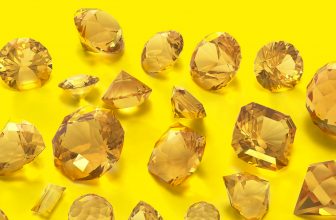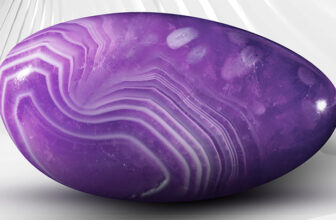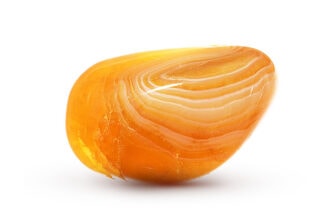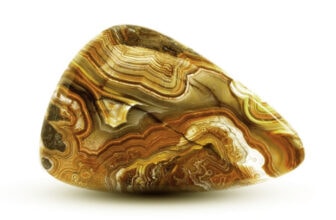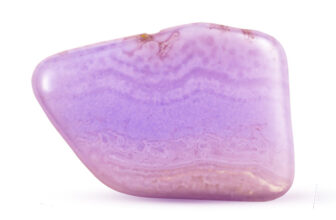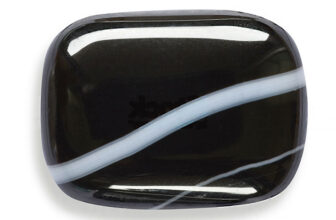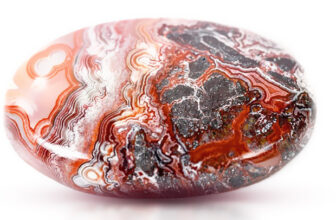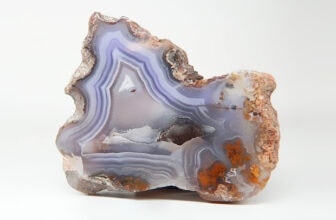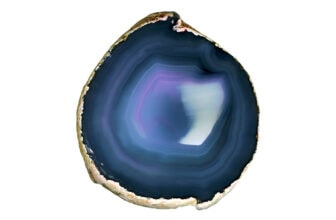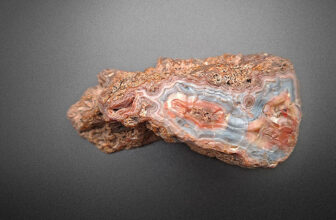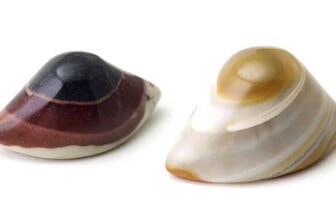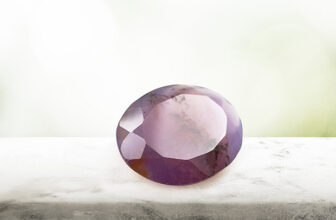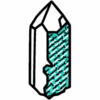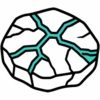The Raw Power of Uncut Crystals
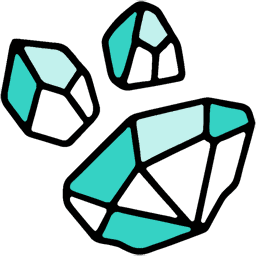 What Makes Raw Crystals So Captivating?
What Makes Raw Crystals So Captivating?
Have you ever held a stone that felt alive – gritty, jagged, pulsing with something ancient? That’s the quiet power of a raw crystal. These are crystals in their most natural form, untouched by machines, saws, or polishers. No glossy surface, no symmetry engineered by human hands – just the earth’s pure craftsmanship on display.
Raw crystals are the wild children of the mineral world. Unlike tumbled or carved stones, which are softened and refined, raw pieces retain their original faces and fractures. Each ridge and imperfection tells a geological story – a snapshot of molten rock cooling, mineral-rich water seeping through crevices, or millennia of pressure sculpting shape from chaos.
And there’s something deeply symbolic about that. The very word raw comes from the Old Norse hrár, meaning “unprocessed” or “uncooked.” It speaks to authenticity – to things in their natural, unmasked form. For many crystal lovers, this unrefined essence represents purity, honesty, and connection to Earth’s primal energy.
Born of Fire, Water, and Time
How do raw crystals actually come into being? The answer is as diverse as the stones themselves – a symphony of natural forces playing over unimaginable spans of time.
Some crystals form deep underground, birthed from molten rock that cools ever so slowly. As magma solidifies, minerals begin to crystallize, growing into intricate structures that can range from delicate quartz needles to hefty amethyst clusters. Others arise in watery realms – hydrothermal veins where hot, mineral-rich solutions deposit crystals into cracks and cavities, building layer upon layer like nature’s own slow-motion art.
Temperature, pressure, and the chemistry of the environment all shape a crystal’s eventual form. That’s why a piece of smoky quartz from Brazil looks so different from one found in the Swiss Alps, or why hematite might appear smooth and metallic in one region and ruggedly earthy in another.
The Many Faces of Raw Crystals
If you’ve ever browsed a table full of rough stones, you know how wildly different they can look. Some sparkle like a pocket of stars; others seem dull at first glance – until you tilt them, and the hidden shimmer reveals itself. That’s the wonder of raw crystals: no two are ever the same.
But how do we make sense of this variety? Let’s look at the main ways raw crystals differ – by what they’re made of, where they come from, and how they grow.
By Mineral Composition
Every crystal begins as a unique arrangement of atoms, forming repeating patterns that define its structure and personality.
The Quartz family is the most abundant – and arguably the most versatile. Clear Quartz stands as the great amplifier, believed to boost energy and intention. Amethyst, its purple cousin, radiates calm and clarity, while Citrine glows with warm, sunlit optimism. Then there’s Rose Quartz, gentle and pink, a raw emblem of love and emotional healing.
In the metallic realm, we find the grounding energy of Pyrite and Hematite. Pyrite’s raw, golden cubes look almost mechanical – as though nature briefly turned engineer – while Hematite, dark and reflective, feels heavy in the hand, anchoring the mind and body.
Colorful minerals like Malachite, Azurite, and Fluorite paint the earth with vibrant greens, blues, and purples. Each piece can look like a frozen wave or a swirl of pigment from an artist’s brush. And then there are the translucent and opaque varieties: the ghostly shimmer of Selenite, the volcanic sheen of Obsidian, the earthy solidity of Jasper – each holding a texture and temperament all its own.
By Origin
Geography shapes crystals just as much as chemistry does. A quartz cluster from Brazil may form in vast caves, growing into grand, cathedral-like structures. In contrast, Madagascar produces smaller, deeply colored pieces – compact yet vibrant. India’s stones often show strong saturation, while Namibian minerals gleam with a distinct metallic brightness born from their desert origins.
Every region leaves a trace – a geological accent. Crystals are, in a way, dialects of the Earth. When you hold one, you’re holding a story written in temperature, pressure, and time, translated through the language of stone.
By Structure
Raw crystals also differ in how they grow. Some appear as single points – clear, focused, and precise, like a solitary idea taking form. Others form clusters, where many points grow together in harmony, creating radiant networks of light and energy.
You might also find raw chunks, broken naturally or through mining – rugged, irregular forms that embody raw strength and authenticity. Then there are matrix specimens, where crystals grow attached to their original rock base. These are particularly prized because they show the complete picture – crystal and host stone, united as they were in the earth.
Stones of Story and Spirit
What did our ancestors see in raw stones that made them sacred? Before there were polished gems, before faceted brilliance or jewelry-making tools, there were simply stones – dug from the ground, gleaming faintly in the sun, whispering of something greater.
Across every culture and continent, raw crystals have carried a sense of mystery. Their untouched forms seemed alive – gifts from the earth, shaped by forces humans could barely comprehend. Let’s trace their story through time, from ancient reverence to modern rediscovery.
The First Sacred Tools
Thousands of years ago, long before science named them, people sensed that crystals held power. Raw stones were among humanity’s first treasures – not for decoration, but for connection.
The Egyptians placed uncut quartz and lapis lazuli in tombs to guide souls through the afterlife. In ancient Greece, amethyst was kept as a charm against intoxication and overindulgence. Indigenous cultures across the Americas held crystals like smoky quartz and obsidian as tools for protection and insight – mirrors for the soul rather than ornaments for the body.
The Language of the Earth
Many indigenous and spiritual traditions still use raw stones to ground rituals and connect with nature’s rhythm.
The Native American peoples have long considered stones to be the “bones of Mother Earth,” sacred holders of memory and spirit. In Shamanic practices, raw crystals are used to channel earth energy during ceremonies and healing journeys. Similarly, in Eastern traditions, crystals in their unaltered form are seen as pure embodiments of elemental forces – fire, earth, air, and water.
The Energy Beneath the Surface
Ever notice how raw crystals seem to buzz in your hand – not literally, but energetically, like they’re quietly awake? Many people describe this as a kind of pulse or vibration, a subtle yet powerful presence that feels more intense than in polished stones. Whether you see this as energy, magnetism, or pure symbolism, one thing’s clear: raw crystals hold a certain aliveness that can’t be faked.
Let’s explore what makes them so energetically distinct – and how that rawness translates into healing and spiritual meaning.
The Essence of Raw Energy
When a crystal is left uncut and unpolished, it retains every microscopic edge, every mineral trace from its natural growth. Nothing is smoothed, nothing masked. This is why many crystal healers believe raw stones channel energy in its most direct form – unrefined, potent, and grounding.
You could think of it like sound: a polished crystal is a beautiful melody, harmonized and soft, while a raw crystal is the drumbeat – primal, steady, and pure. It carries the Earth’s rhythm, not ours.
Raw Quartz, for example, is said to amplify intention and clarity in its raw form, cutting through energetic clutter like light through fog. Rough Black Tourmaline is often used for protection, grounding scattered emotions, and creating a sense of inner safety. And raw Celestite, with its pale blue glow, seems to hold the stillness of the sky itself – a gentle reminder to breathe deeper and think clearer.
When Life Feels Too Polished
Modern life can feel… overprocessed. We smooth every surface, curate every image, and filter every emotion. Raw crystals counter that – they invite us back to honesty. Their irregular shapes remind us that real healing is messy, layered, and beautifully imperfect.
Holding a rough stone can feel like reconnecting with something simple and steady – a reminder that nature never rushes. The jagged edges, the weight, the cool texture – all these sensations anchor you to the present. That’s why many people use raw stones during meditation, to release tension or restore emotional balance.
Raw vs. Polished
There’s no right or wrong choice – only resonance. Raw crystals tend to radiate energy that feels strong, primal, and focused. They’re ideal when you need grounding, strength, or a sense of renewal. Polished or tumbled stones, by contrast, emit a softer, more harmonized energy – perfect for soothing emotions or gentle self-work.
Some people like to keep both: raw stones for intensity and drive, polished ones for calm and restoration. Together, they mirror the duality of life – wildness and grace, chaos and peace.
How to Work With Raw Crystals
Feeling unbalanced, scattered, or a little disconnected from yourself? Raw crystals can serve as grounding allies – tangible reminders that healing doesn’t always come from doing more, but from reconnecting with what’s already there. Because of their strong, unfiltered energy, raw stones are often used in simple yet powerful ways, both for spiritual and emotional support.
Let’s look at how to bring their presence into daily life – not as decoration, but as living, breathing tools for balance.
For Meditation and Mindfulness
When your thoughts won’t slow down, holding a raw stone can feel like pressing pause. The texture alone – uneven, cool, and ancient – draws your attention away from the noise in your head and back into your body.
Try this: during meditation, hold a raw crystal in your palm and focus on its surface. Notice the ridges, the temperature, the small imperfections. These tactile sensations help anchor your awareness, making it easier to quiet mental chatter.
Many people use Clear Quartz or Amethyst clusters for mental clarity, Hematite for focus, or Black Tourmaline for grounding and energetic protection during practice.
In Energy Work and Crystal Grids
If you work with energy healing, you’ll find raw crystals indispensable. Their rough form is thought to amplify energy flow – ideal for building crystal grids or anchoring the corners of sacred space.
Because their vibration is direct and unprocessed, raw crystals are excellent for clearing blocked energy in the body or home. You can place raw selenite to cleanse and recharge other stones, or use smoky quartz to draw out stagnant emotions. Some practitioners even place raw stones on chakras during rebalancing sessions, believing the crystal’s natural geometry communicates with the body’s subtle energy field.
Energy You Can Feel
Raw crystals aren’t just for spiritual rituals – they can transform the atmosphere of a room. Placing them in your home or workspace brings in a sense of organic texture and quiet grounding.
A rough rose quartz cluster on a nightstand can soften the emotional energy of a bedroom. Citrine on a desk may help with focus and motivation. And black tourmaline near entryways is often used to keep the space energetically clear and protected.
Unlike tumbled stones, raw pieces look elemental – like fragments of the earth itself. They remind us that beauty doesn’t need refinement, and peace doesn’t need perfection.
Identifying & Authenticating Raw Crystals
In a world overflowing with imitations and “enhanced” stones, knowing how to recognize genuine raw crystals has become an essential skill. Real stones hum with subtle life – while fakes, however pretty, often feel flat or too perfect. Learning to tell the difference doesn’t just protect your wallet; it deepens your connection with the Earth’s true creations.
Let’s explore how to spot authenticity, understand quality, and make sure your crystals come from ethical sources that honor both people and planet.
Natural vs. Artificial
Start with your senses. Real raw crystals rarely look flawless. Their colors tend to be varied, not uniform; they might have small cracks, inclusions, or uneven textures. These “imperfections” are the marks of geological time.
If a so-called raw crystal appears suspiciously glossy, overly bright, or perfectly smooth, take a closer look. It might have been polished or dyed to mimic the raw aesthetic. For instance, artificially colored quartz often shows streaks or unnatural tones – neon blues, vivid purples – that don’t occur in nature.
Synthetic crystals, on the other hand, may look hyper-clear and lack the tiny growth lines or cloudy inclusions that natural stones display. Hold one up to the light: genuine stones often reveal subtle internal structures, like frozen movement – a visual rhythm that artificial ones can’t quite replicate.
What Makes a Raw Crystal Special
Authenticity is one thing, but quality is another. The best raw crystals don’t have to be the biggest or most perfect; they’re the ones that retain integrity – both visually and energetically.
Look for:
- Natural color saturation that feels deep, not painted-on.
- Well-defined crystal faces, even if chipped or asymmetrical.
- Stable structure – not crumbly or coated with artificial shine.
- Balanced energy – this one’s intuitive. When you hold the stone, does it feel “alive,” grounding, or subtly magnetic? Trust that feeling; it’s often more reliable than appearance alone.


